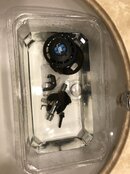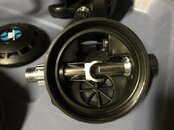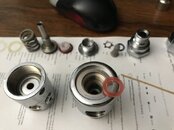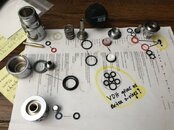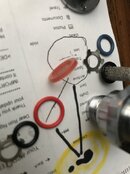Hi, the curmudgeon is back.
We're really helpful folks here on SB.
And we're, bit by bit, giving helpful advice to two posters who are starting down the DIY road.
But the post above about shims being used for some "special situation" just really should be a red flag for all us helpful DIY'ers. As I said above, reg service isn't complicated, but it is precise. Well, add to that, if you're gonna do this, don't just be a part changer like the technicians we love to hate.
@rnln , buy Regulator Savvy from ScubaTools. Read it. Then take your regs apart. But not before, please?
For our contributors (and I'm guilty, too), let's not help our new buddies get hurt, okay? When a post shows such total unfamiliarity with regulator theory (sorry, @rnln ), I think a little "tough love" is in order. This is just my 2¢, and I'm writing as a member, not as a Moderator.
We're really helpful folks here on SB.
And we're, bit by bit, giving helpful advice to two posters who are starting down the DIY road.
But the post above about shims being used for some "special situation" just really should be a red flag for all us helpful DIY'ers. As I said above, reg service isn't complicated, but it is precise. Well, add to that, if you're gonna do this, don't just be a part changer like the technicians we love to hate.
@rnln , buy Regulator Savvy from ScubaTools. Read it. Then take your regs apart. But not before, please?
For our contributors (and I'm guilty, too), let's not help our new buddies get hurt, okay? When a post shows such total unfamiliarity with regulator theory (sorry, @rnln ), I think a little "tough love" is in order. This is just my 2¢, and I'm writing as a member, not as a Moderator.




